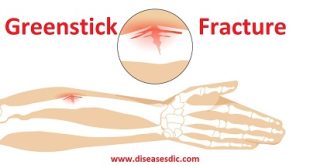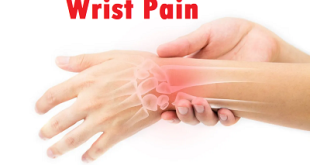Definition
Metatarsalgia is a pain in the ball of your foot. It is often caused by wearing shoes with thin soles and high heels. This puts extra pressure on the bones in the ball of the foot. Standing or walking on a hard surface for long periods also puts added pressure on the bones, causing pain. The pain can occur under any of the five metatarsal bones, although it’s most common in the second. Bent or twisted toes and bunions can make the problem worse. So it can be overweight. A tight Achilles tendon can worsen the problem. Sometimes high arches or arthritis can also cause metatarsalgia.
Inside the ball of your foot
The long bones in the middle of your foot are called the metatarsal bones. Each metatarsal bone ends in the ball of the foot. When you walk, these bones bear the weight of your body as your foot pushes off the ground. If there is more pressure on the end of one bone, it presses on the skin beneath it. This causes pain and inflammation in the ball of the foot (metatarsalgia). A callus (a hard growth of skin) may also form on the ball of the foot.
Epidemiology
Especially common in athletes engaging in high-impact sports (running, jumping, dancing), in rock climbers (12.5%), and in older active adults
Types of Metatarsalgia
Metatarsalgia divided into three types:
Primary metatarsalgia refers to symptoms arising from innate abnormalities in the patient’s anatomy leading to an overload of the affected metatarsal. Metatarsophalangeal joint instability of the lesser toes (mainly due to plantar plate insufficiency) is also a common cause of metatarsalgia.
Secondary metatarsalgia can be caused by systemic conditions such as arthritis of the MTP joint.
Iatrogenic metatarsalgia can occur after (failed) reconstructive surgery.
Risk factors
Metatarsalgia is more common in older adults due to the aging process. Factors that increase your chance of developing metatarsalgia include:
- Feet with high arches
- Feet with abnormally long bones
- Claw/ hammer toes
- High-impact sports
- Being overweight
- Wearing shoes that don’t fit well or high heels
- Problems with circulation
- Gout
- Diabetes
Causes
Metatarsalgia is caused by damage to the metatarsal bones in the foot.
What are metatarsals?
The metatarsals are five long bones that run underneath the soles of your feet. They connect your ankle bones to your toe bones. The main purpose of the metatarsals is to support your weight when you are walking, jumping and running, specifically when you are pushing up with your feet. However, the metatarsals can sometimes become painful.
Common causes
Some common causes of metatarsalgia include:
Badly fitting footwear, high-heeled or tight, restrictive shoes or boots- Shoes with a narrow toe area or high heels can force the ball of the foot into a small amount of space, which puts more pressure on that area.
Being overweight or obese- This can increase the pressure on the foot.
Age- Older people are more susceptible to metatarsalgia as the fat pad that protects the foot can thin with age, making them more likely to feel pain in the ball of their foot.
Bone structure of the foot- Narrow, high-arched feet or flat feet can increase the chance of metatarsalgia.
High-impact sports, such as running or tennis, put extra pressure on the foot.
Stress fractures in the foot- These occasionally occur in athletes or walkers and cause pain to come on rapidly.
Medical conditions are known to cause metatarsalgia
Several medical conditions can cause foot pain, which often changes the way you walk. This in turn places excessive weight onto your metatarsals, triggering metatarsalgia.
These conditions include:
Arthritis- Pain and swelling of the joints, which can be the result of general wear and tear (osteoarthritis) or your immune system mistakenly attacking the joints (rheumatoid arthritis)
Gout- A condition where crystals form inside the joints causing them to become very painful and inflamed
Bunions- An abnormal deformity of bone that can occur in the big toe, which can weaken the toe placing excessive pressure on the other metatarsals
Morton’s neuroma- A common condition in which the nerves inside the feet become compressed causing a sharp or dull pain between the toes
Diabetes- The high levels of blood sugar associated with diabetes can, over time, cause nerve damage and pain affecting the feet
Hammertoe- When one of your middle toes is bent downwards, which can cause an uneven distribution of weight onto your metatarsals
Symptoms
Symptoms of metatarsalgia include all or some of the following:
- Sharp, burning, or aching pain in the ball of your foot, frequently occurring in one or more of the five metatarsal bones.
- The sensation of having a pebble in your shoes
- Symptoms that worsen as you spend more time in standing, running or walking, especially while barefoot, and eases with rest
- Occasional burning, tingling or numb sensation in your toes
- Often localized symptoms under the first metatarsal bone (big toe bone)
Another frequent site is pain between the first and second metatarsal bone
Metatarsalgia complications
Left untreated, metatarsalgia might lead to pain in other parts of the same or opposite foot and pain elsewhere in the body, such as the low back or hip, due to limping (altered gait) from foot pain.
Diagnosis and test
If you have metatarsalgia, your doctor will usually try to establish the cause for the pain. They may be able to identify the cause just by listening to you, asking you questions, and examining your foot. However, they may also suggest one or more of the following investigations:
Blood tests: These can check for diabetes, arthritis, and gout.
X-ray of your foot: This can show a problem with the bones or joints in your foot.
An ultrasound scan may be used to detect Morton’s neuroma.
Other tests: Occasionally more detailed tests, such as a magnetic resonance imaging (MRI) scan of your foot, are needed.
Treatment and medications
Early treatment is critical to relieve pain. Mild to moderate cases of forefoot pain can be managed by conservative treatment. Severe cases of neuroma and bunions may require surgery. The following conservative measures help to ease the pain of metatarsalgia:
Medications: Your doctor may prescribe pain medications to reduce pain and inflammation.
Resting your feet and applying ice packs wrapped in a towel over the sole of the affected foot can reduce pain and swelling
Adaptation to a weight-loss dietary regimen, if you are overweight
Activity modification: Avoid vigorous activities that exert excessive stress on bones and tendons of the feet. Begin specific exercises to help strengthen the foot muscles.
Use customized orthotics or insoles to support and protect the foot. It also helps cut back the pressure placed on the metatarsal bones.
Extra-fit toe pads, softening or gel pads can be placed inside your shoes to help cushion the shock while walking. Simple footwear modifications include using low-heeled shoes and broad toe box shoes with silicone gel pads to minimize discomfort at the tip of the toes.
Immobilization using a cast, splint, brace, walking boot, or other devices to prevent movement of the feet and assist in faster healing of the ruptured tendon.
Splint
Surgery is considered as the last option if in case the symptoms fail to resolve with the conservative treatments and depends on the age and activity level of the individual, extent of damage to the tendon or bone or nerve, and other factors. Surgical treatment involves realigning or reshaping the metatarsal bones.
Prevention of Metatarsalgia
Metatarsalgia cannot always be prevented. However, when you choose to wear proper footwear, you are taking a step in the right direction.
Here are a few guidelines to help you purchase a good pair of shoes:
- Wide shoe (lots of space for the foot)
- Low heels
- Well-made and firm shoes
- Avoid high heels and narrow shoes. As with the prevention of neuroma, it will help your foot to avoid any unnecessary pressure.
 Diseases Treatments Dictionary This is complete solution to read all diseases treatments Which covers Prevention, Causes, Symptoms, Medical Terms, Drugs, Prescription, Natural Remedies with cures and Treatments. Most of the common diseases were listed in names, split with categories.
Diseases Treatments Dictionary This is complete solution to read all diseases treatments Which covers Prevention, Causes, Symptoms, Medical Terms, Drugs, Prescription, Natural Remedies with cures and Treatments. Most of the common diseases were listed in names, split with categories.








I have foot pain during night when I go to sleep from last 2month. pl advice me what to do
Pinched nerves Compression of some nerves in your ankle can cause tarsal tunnel syndrome. Compression of the sciatic nerve in your back and legs can cause foot pain, too. In both cases, the pressure on these nerves tends to be worse at night, which leads to increased pain.
Note: Kindly consult a podiatrist for proper diagnosis and treatment.
i have foot burning at night time what kind of medicine can i use
For foot burning at night, consider discussing with a healthcare professional for a proper diagnosis. Over-the-counter topical analgesics, pain relievers, foot elevation, and warm or cold compresses may offer relief, but the choice of medication should be guided by your doctor based on the specific cause of your symptoms. Seeking professional advice is essential for an accurate diagnosis and appropriate treatment.